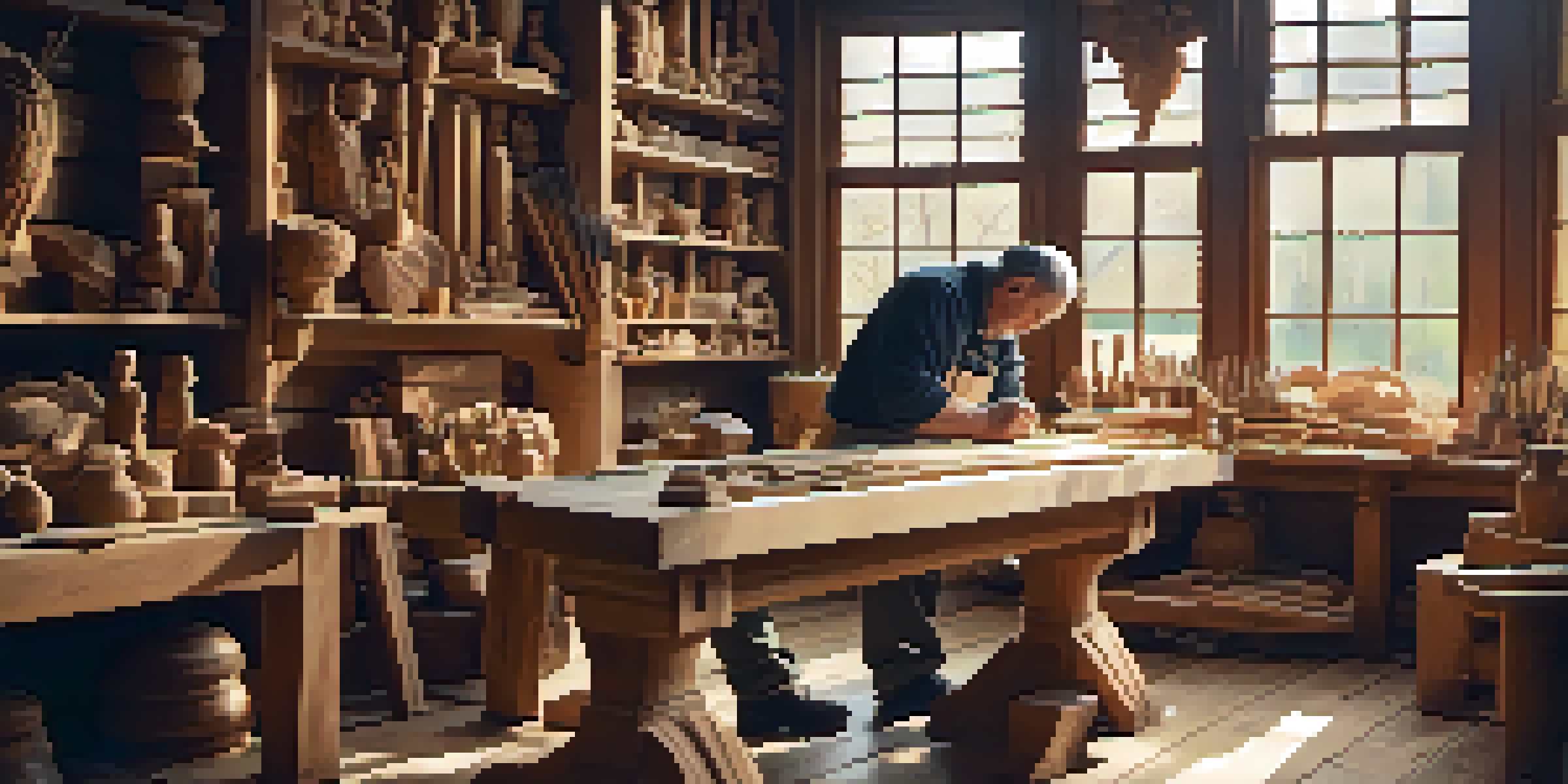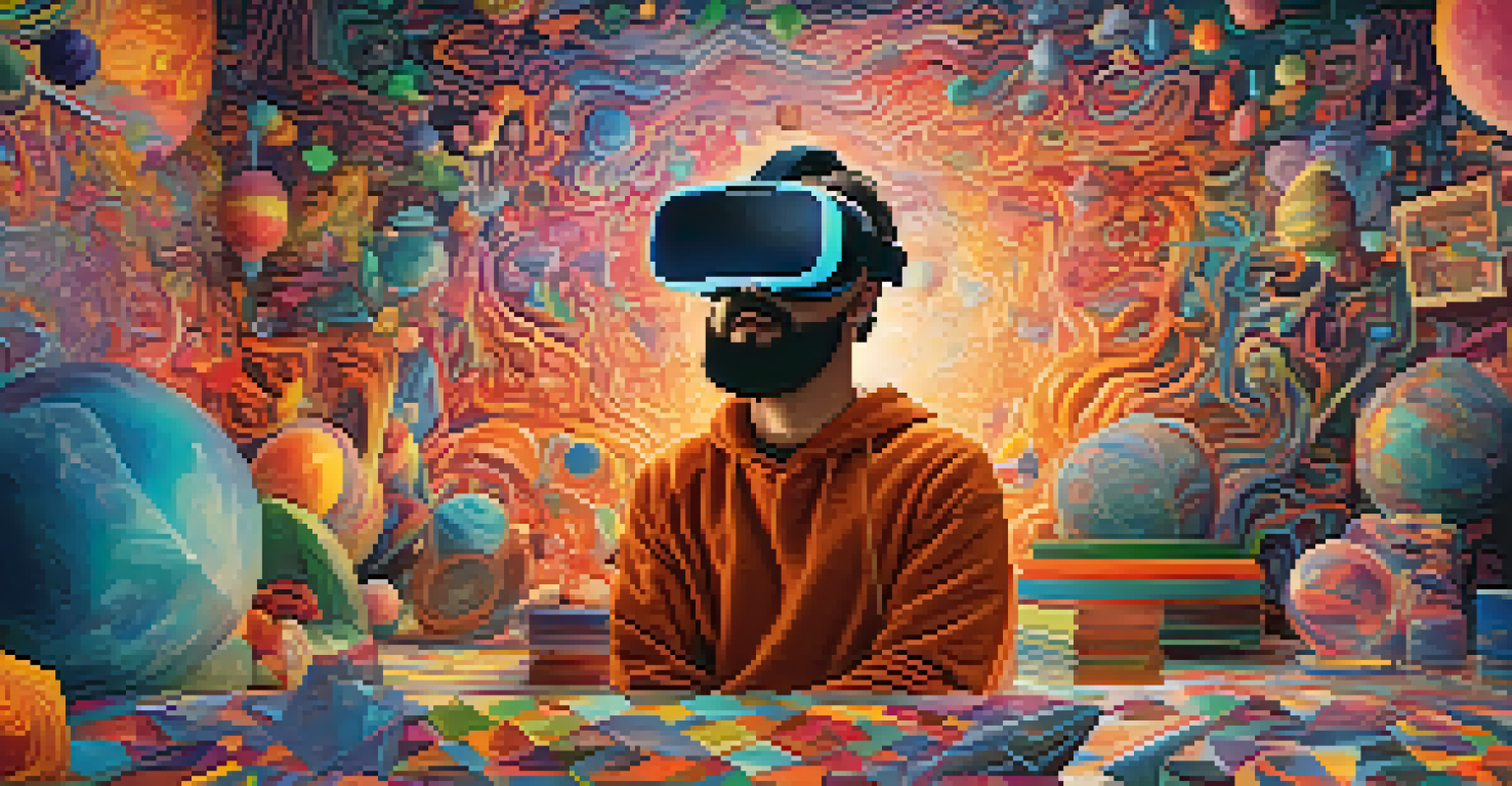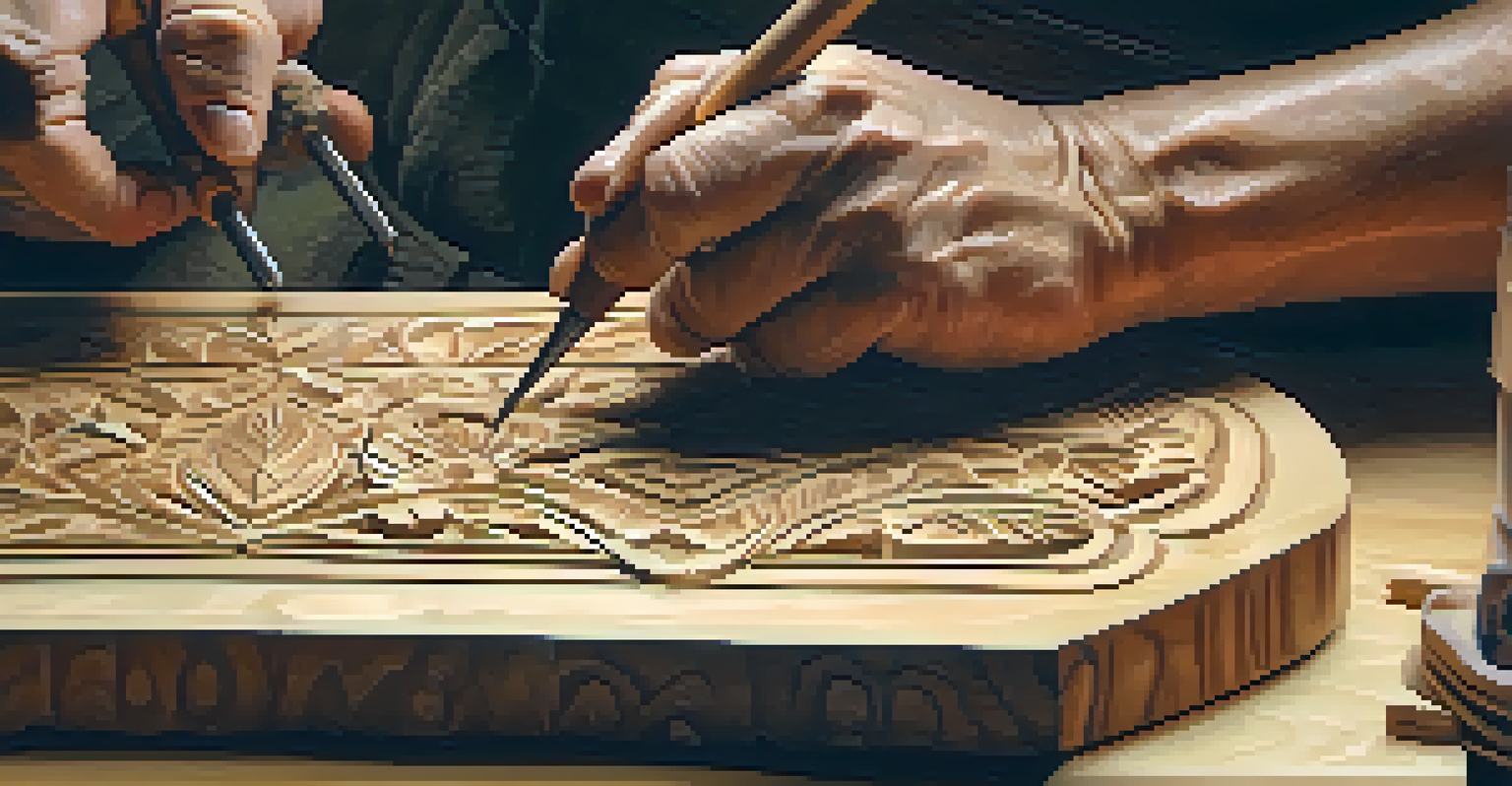Enhancing Traditional Carving Techniques Through Virtual Reality

Understanding Traditional Carving Techniques
Traditional carving has a rich history, steeped in craftsmanship and artistry. Carvers often rely on age-old methods passed down through generations, using tools like chisels and gouges to create intricate designs. These techniques require a deep understanding of materials, patience, and a keen eye for detail, making the art form both challenging and rewarding.
Art is not freedom from discipline, but disciplined freedom.
Despite its beauty, traditional carving can be limited by the physical nature of the craft. Carvers must work within the constraints of their materials and tools, which can sometimes stifle creativity. Additionally, mastering these techniques can take years of practice, which might deter newcomers from exploring this art form.
However, the integration of technology can open new doors for carvers, allowing them to experiment and innovate in ways that were previously unimaginable. This is where virtual reality (VR) steps in, offering a fresh perspective on how we can enhance the traditional carving experience.
The Role of Virtual Reality in Artistry
Virtual reality immerses users in a digital environment, providing a unique platform for artists to explore their creativity. With VR, carvers can visualize their designs in a three-dimensional space, allowing them to experiment with proportions and details without the risk of damaging materials. This immersive experience can also help artists to envision their finished pieces more clearly.

Moreover, VR can simulate the tactile sensations of carving, enabling users to practice their techniques in a risk-free setting. This means that beginners can learn the ropes without the fear of ruining expensive wood or stone, while seasoned carvers can refine their skills or try new styles. The ability to practice repeatedly in a virtual realm can significantly enhance one's proficiency.
VR Enhances Traditional Carving
Virtual reality provides carvers with innovative tools that allow for experimentation and skill development, enriching the traditional carving experience.
In addition, VR technology can foster collaboration among artists from different parts of the world. Through shared virtual spaces, carvers can exchange ideas, techniques, and feedback in real time, enriching their learning experience and broadening their artistic horizons.
Enhancing Skill Development Through VR Training
One of the significant advantages of using virtual reality in carving is the ability to create tailored training programs. These programs can adapt to individual learning styles, providing personalized feedback that can accelerate skill development. By breaking down complex techniques into manageable steps, VR can help users grasp concepts more quickly and effectively.
The best way to predict the future is to create it.
For instance, a virtual instructor can guide a user through the intricacies of a particular carving technique, highlighting common mistakes and offering suggestions for improvement. This level of detailed instruction is often lacking in traditional classroom settings, where one-on-one attention can be limited. Additionally, users can revisit lessons as often as needed, reinforcing their learning.
Furthermore, VR training can incorporate gamification elements, making the learning process more engaging and fun. By turning skill-building into a game, users are more likely to stay motivated and committed to improving their craft, ultimately leading to a more skilled and confident artist.
Exploring Creativity with Virtual Tools
Virtual reality opens up a new realm of creative possibilities for carvers. Artists can experiment with colors, textures, and designs in a digital space before committing to physical materials. This freedom to explore without limitations allows for more innovative and daring creations, pushing the boundaries of what traditional carving can achieve.
For example, carvers can visualize how different materials will react when carved, understanding the nuances of each before they even begin. This not only saves time and resources but also encourages artists to take risks they might not have considered in a traditional setting. The ability to visualize final products can lead to more confident decision-making during the actual carving process.
Personalized Learning with VR
Tailored VR training programs can adapt to individual learning styles, accelerating skill acquisition and providing detailed, personalized feedback.
Additionally, the integration of augmented reality (AR) with VR can enhance the experience further. By overlaying digital designs onto physical materials, carvers can see how their ideas will translate into reality, allowing for adjustments and refinements along the way.
The Intersection of Tradition and Technology
While some purists might view technology as a threat to traditional craftsmanship, the truth is that VR can complement and enhance these age-old techniques. By merging the tactile experience of traditional carving with the innovative tools offered by VR, artists can create a harmonious blend of old and new. This fusion can lead to a renaissance in the art of carving, attracting a new generation of artists.
Furthermore, embracing technology does not mean abandoning tradition. Instead, it allows artisans to honor their craft while exploring new avenues for expression. By using VR to learn and innovate, carvers can preserve the essence of traditional techniques while adapting to modern artistic demands.
Ultimately, the intersection of tradition and technology can lead to a richer, more vibrant artistic community, where skills are shared, and creativity knows no bounds. This collaboration between past and present can ensure that the art of carving remains relevant and continues to evolve.
Challenges in Integrating VR into Carving
Despite the many benefits of using virtual reality in carving, there are challenges that must be addressed. One of the primary hurdles is the accessibility of technology; not all artists have the means to acquire VR equipment or the necessary software. This disparity can create a divide between those who can easily access these tools and those who cannot, potentially limiting the growth of the craft.
Additionally, there is a learning curve associated with adopting new technology. Some traditional carvers may feel overwhelmed or intimidated by the prospect of integrating VR into their practice. To overcome this, educational programs and workshops can play a vital role in easing the transition and demonstrating the value of these tools.
Bridging Tradition and Technology
The integration of VR in carving creates a harmonious blend of old and new, ensuring that traditional techniques evolve while remaining relevant.
Moreover, ensuring that VR experiences accurately replicate the physical sensations of carving is essential for a successful integration. Developers must work closely with artists to create realistic simulations that truly reflect the intricacies of the craft, ensuring that users can translate their virtual skills into real-world applications.
The Future of Carving in a Virtual World
As technology continues to evolve, the future of traditional carving looks promising with the integration of virtual reality. Artists are already beginning to experiment with VR, and as the technology becomes more widespread, we can expect to see even more innovative approaches to carving. This evolution will likely lead to new styles and techniques that blend traditional craftsmanship with cutting-edge technology.
Moreover, as the barriers to entry continue to decrease, we may witness a surge of interest in carving as a hobby or profession. With VR making the craft more accessible and engaging, more people may be inspired to pick up their tools and start creating. This shift could lead to a revitalization of the carving community, fostering collaboration and shared learning experiences.

Ultimately, the marriage of traditional carving techniques and virtual reality has the potential to redefine the art form. By embracing change and innovation, carvers can ensure that their craft not only survives but thrives in the modern world, inspiring generations to come.